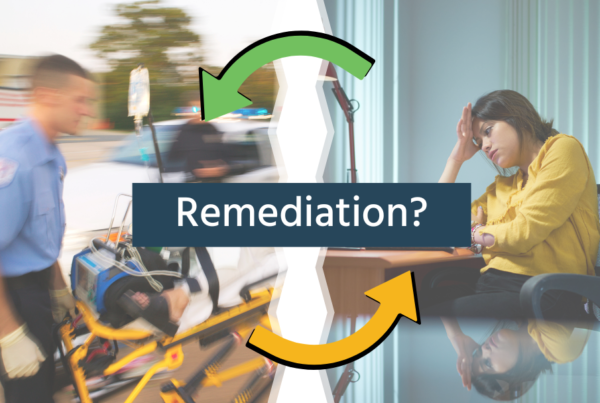 Embrace the 2015 AHA Guidelines
Embrace the 2015 AHA Guidelines
Let’s face it: there are still providers slamming the NRB mask on patients who don’t need it. Worse yet, some educators still teach it. From an EMS standpoint we bombed at implementation of the 2010 guidelines. The 2015 guidelines don’t have major changes. So let’s shore up the 2010 guidelines, embrace the 2015 guidelines and get our compressions between 100 and 120 per minute. Does anyone have a ruler we can use to measure 2.4 inches?
Limmer Education’s AHA 2015 Quiz is available on EMS1.com if you want to test yourself.
Bring Compassion and Peer Support into the Classroom
We’ve become acutely aware of the stress EMS providers suffer. PTSD and suicide are all too common in the business. It’s time to expand our education about these issues beyond brief coverage in a chapter on well-being to a more comprehensive approach. We recommend the following as part of this approach:
- Expand your class coverage of EMS stress. This may include bringing in a psychologist or social worker, or an EMS provider who has suffered stress and is willing to share their story.
- Have your students look at the codegreencampaign.org web site.
- Pay more attention to affective objectives. Encourage students to actually interact with simulated patients rather than making a scenario a simple skills drill.
- Model and encourage supportive behavior in the classroom. This may range from forming study groups, to setting expectations for collegial behavior, to modeling this behavior yourself.
Two relevant programs are about to enter the EMS arena. Emotional Trauma Life Support was developed by one of Dan’s former students. LaGuardia Community College has also developed a dynamic program on psychological care in the prehospital setting.
Embrace the Technology and Educational Methods Available to Us
We’ve had the keys to the kingdom in our hand in this regard for some time and we haven’t used them. It’s time.
Technology is beating down our door. We have simulation programs that offer more reality than ever before. Our students are largely digital natives—often with more tech savvy than their educators. It’s time to embrace technology and use it to develop in our students the clinical decision-making ability we’ve always dreamed about.
We must also embrace alternative educational theories. (Or have things like flipped classrooms, high-quality asynchronous learning and active exercises become mainstream and we’re just behind the times?) The education standards gave us freedom from droning curricula and placed the ball in our court to offer the education we’ve always wanted. It’s time to do just that.
For God’s Sake Stop Using the Word “Basic.”
When we talk to students at a conference or look at their posts online, they say, “I’m starting my basic course.” Or, “I’m taking an EMT-B course.” We used to wonder why they said that, and then we realized it’s because their educators say it. The flyers for their course say it.
The irony is that we really didn’t like the EMT-Basic curriculum. It was too dumbed down and didn’t give EMTs a foundation for advanced practice. Please change the flyers, change your course, and most importantly, change your mindset. EMT-Basic is dead. Long live the thinking EMT.
We Still Need More Pathophysiology
In a repeat topic from our 2015 list—one that’s very appropriate after the EMT-Basic point above—we need to bring relevant pathophysiology into EMT education. It’s the difference between memorizing and understanding patient presentations, and it forms the foundation for the development of solid clinical thinking and reasoning.
It’s never too late to get your pathophys on!


